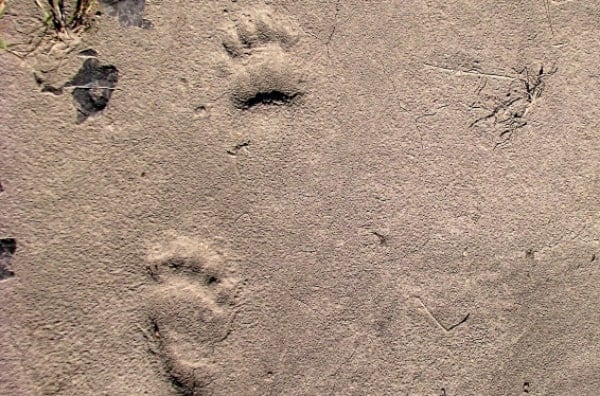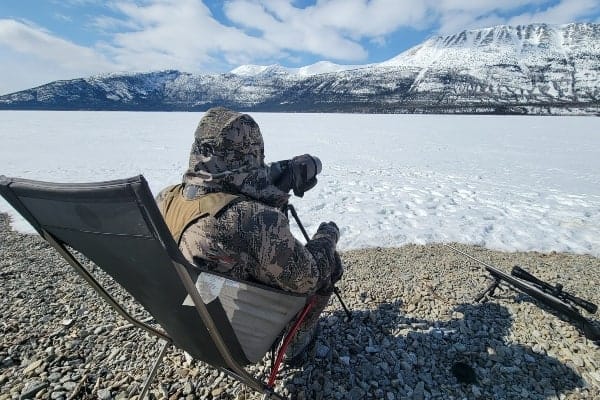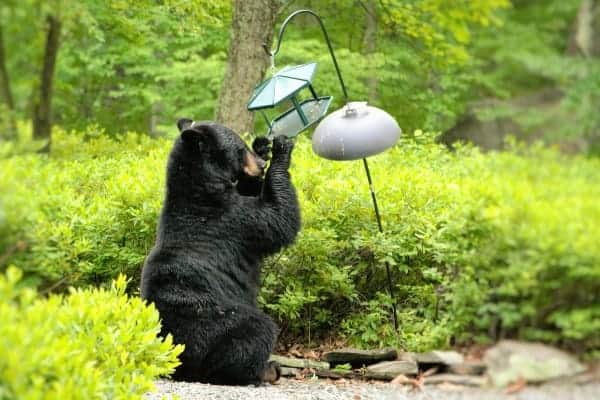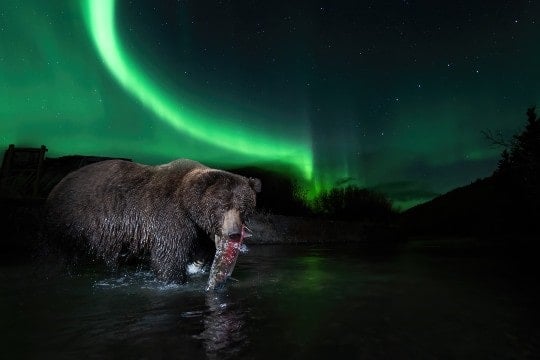If I had to say which member of the bear family I mistrust the most, with little hesitation, I would say the black bear. This is backed up by an experience I had as a conservation officer at the Ottawa Sportsman show. The department had a two-year-old black bear that had been in captivity all its life. It was used at sportsman shows for public viewing as well as education. Some called it a tame bear, but I can assure you that’s the wrong attitude to take when dealing with any bear, whether wild or caged.
At the Ottawa Sportsman Show, those on duty were responsible for feeding and making water available to the caged bear every morning and night. To do so, you entered the cage. I did it many times with this particular bear, but one morning, the person who had been on duty in the evening forgot to feed and water the bear. When I went into the cage with the day’s meal and turned my back to the animal to put its food on a shelf, the bear stood on its back legs and took ahold of the padded shoulder of my dress uniform. Fortunately, it only scratched the skin of my shoulder.
One important thing to remember about bears is the misuse of the word” hibernation” in winter. The bear is not actually in hibernation, but rather a deep sleep, similar to when a human goes into a very deep sleep. I know of a person who actually crawled into a cave to get a picture of a bear one January. The bear was disturbed by the noise of the person and woke up. That guy was lucky to escape with his life. There is a big difference between hibernation and just the deep sleep the bear endures in the cold months. During the “deep sleep,” the bear’s temperature stays about normal compared to that of the groundhog, which truly hibernates, with a body temperature that drops to around 43 to 50 degrees Fahrenheit. Any movement near a bear in its deep sleep could wake the bear, while it would take hours to bring a groundhog out of hibernation.
The female bear is less likely to be in as deep a sleep as the male. After the age of three, she will give birth to her first cub during this sleep period. It is most amazing to see a creature of 300 to 400 pounds give birth to a cub that is little more than the size of a wiener dog, but this is a very dangerous time to come face-to-face with a female bear, regardless of what type of bear it is, as she will attack anything she feels is a danger to her cub. That includes a male bear a couple hundred pounds heavier than herself.
One other thing to remember is that a bear is a very carnivorous creature and will even kill as well as eat its own species (not cubs). I have sat at a distance to watch a female bear train her cub to hunt mice and climb trees, as well as catch fish and swim. I have heard people say that if they saw a bear they would turn and run, or climb a tree, or jump into a river and swim. Sorry folks, the bear could outdo you in a short time on any of these escape attempts.
As to food, the black bear will eat just about anything that walks, crawls, flies or swims. It will also eat just about any weed or plant that grows. This is why bears enter city limits for free handouts from humans. These handouts occur in the form of bird feeders, gardens and especially smelly garbage bins. The City of Whitehorse recently mailed out pamphlets to all homes, strongly advising residents to put their garbage behind fences or in closed shelters, moving them to the roadside only on the morning of pick up. Still, even the smell of an empty garbage bin will attract a bear.
A fitting closure to this week’s column: “Most troubles do not enter without an invitation.” Think about that one the next time you put something in that garbage bin.




